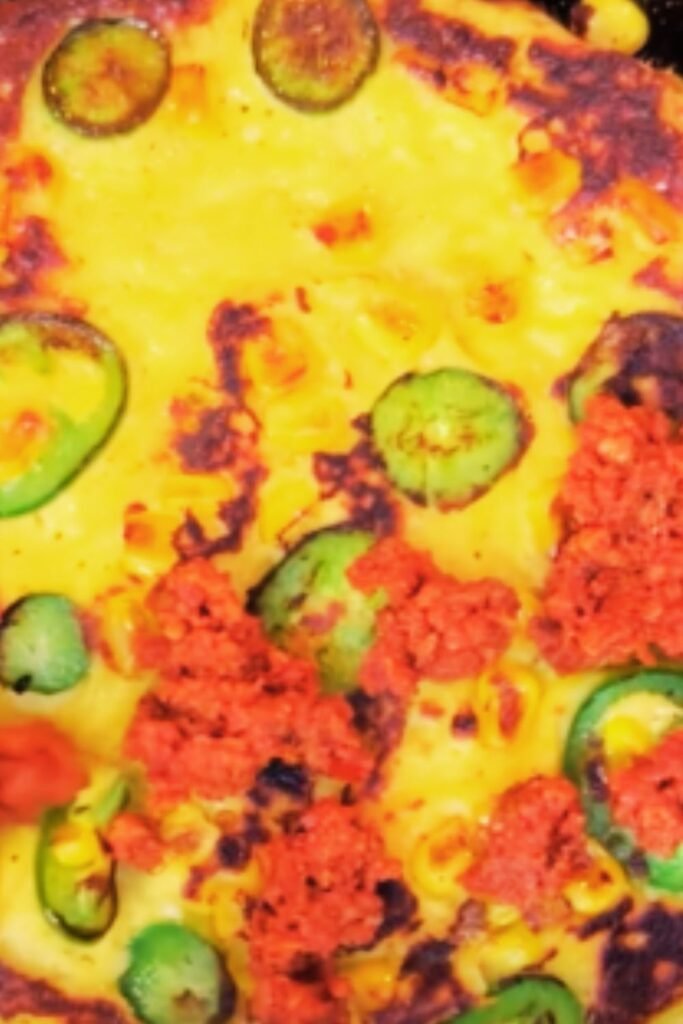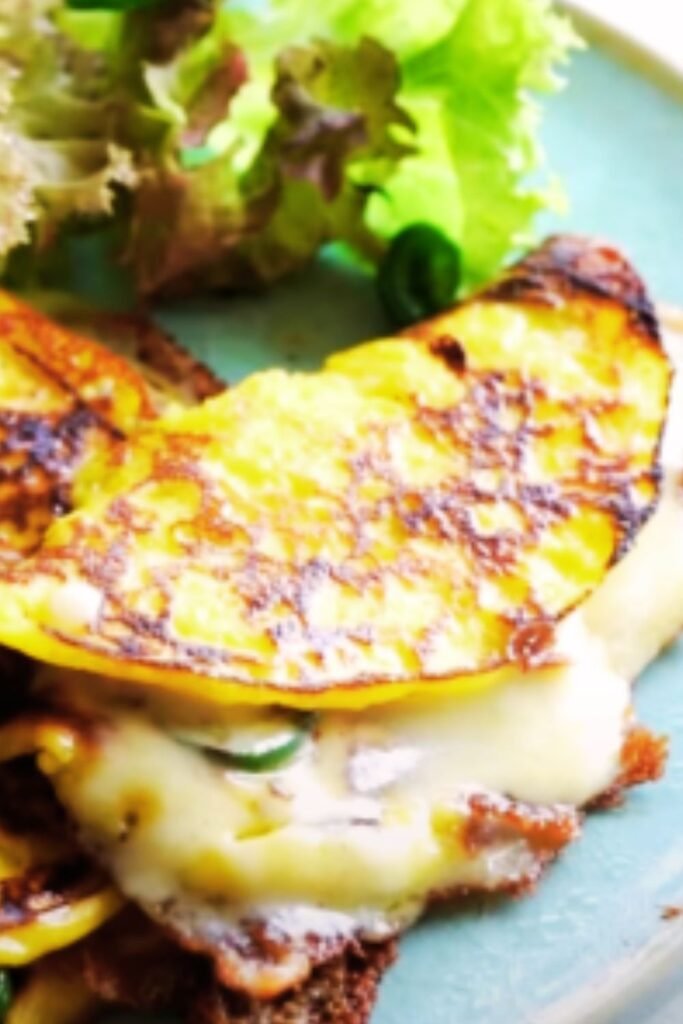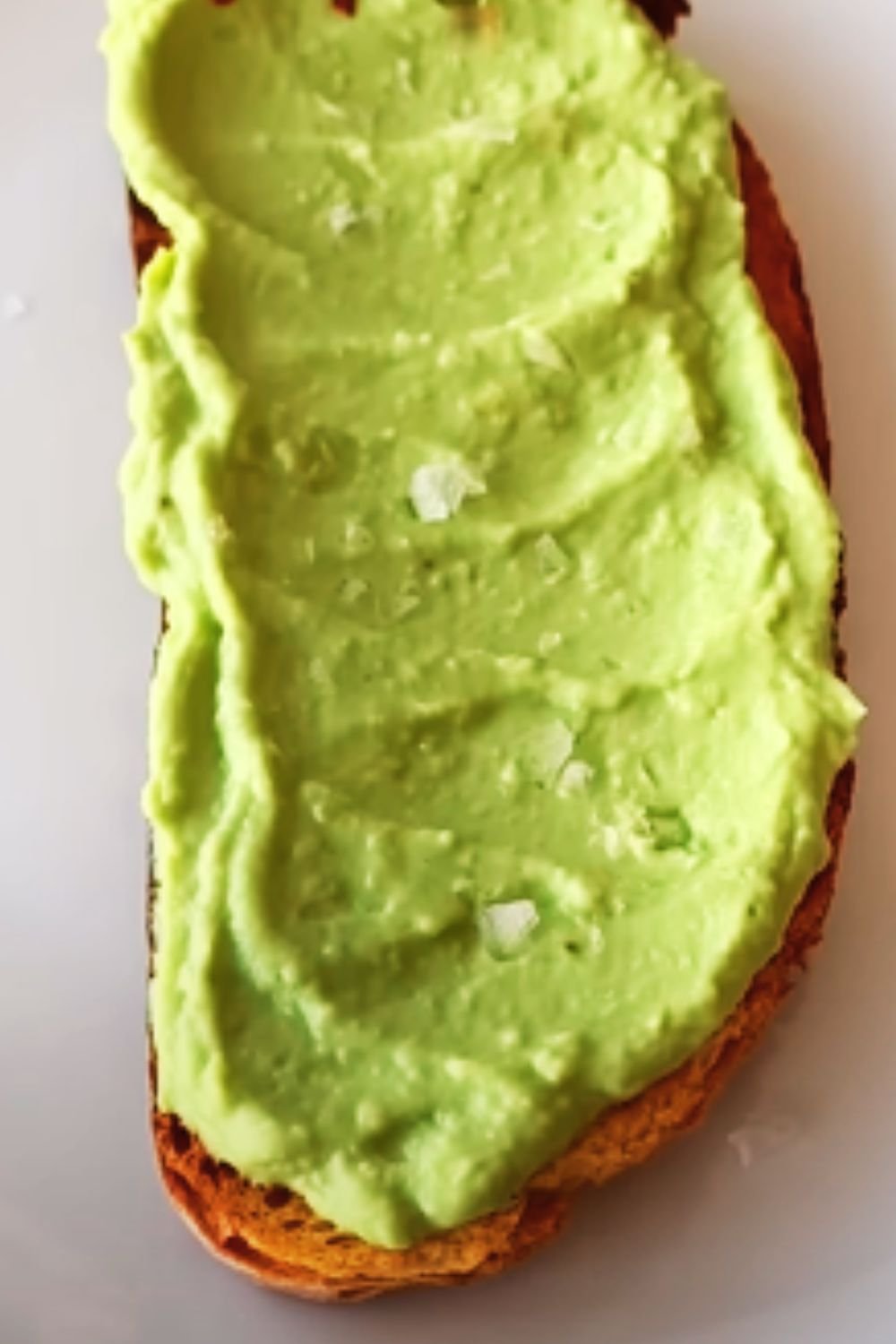Have you ever had one of those food experiences that transports you instantly to another world? That’s what happened to me the first time I sank my teeth into a warm, cheese-filled cachapa during my travels through Venezuela. These golden corn pancakes, with their slightly sweet flavor and tender texture, have become one of my all-time favorite comfort foods that I love recreating at home.
Today, I’m thrilled to share my detailed guide to making authentic Venezuelan cachapas from scratch. These aren’t your ordinary pancakes – they’re a celebration of fresh corn, with a unique texture that’s simultaneously crispy on the outside and tender within. Let me show you how to bring this delicious South American staple to your own kitchen!
What Are Cachapas?
Cachapas (pronounced kah-CHAH-pahs) are traditional Venezuelan corn pancakes made from fresh corn mixed with a simple batter. Unlike many other corn-based foods in Latin America, cachapas use fresh corn kernels rather than corn flour or masa. This gives them their characteristic sweet flavor and unique texture that’s both creamy and hearty.
In Venezuela, cachapas are enjoyed throughout the day – as breakfast, lunch, a snack, or even dinner. They’re typically folded over a generous slice of queso de mano (hand cheese) or queso telita, both fresh white cheeses that melt beautifully. When you take a bite, you experience the perfect harmony between the sweet corn pancake and the savory, melted cheese.
The Cultural Significance of Cachapas
Cachapas hold a special place in Venezuelan culture. They’re more than just food – they represent home cooking, family gatherings, and roadside treats. Throughout Venezuela, you’ll find small roadside stands called “taguaras” that specialize in cachapas, where locals and travelers alike stop for a quick, satisfying meal.
What I love most about cachapas is how they showcase Venezuela’s agricultural bounty. The country’s fertile soil produces exceptionally sweet corn, making these pancakes a genuine celebration of local ingredients. In my travels, I found that each region has subtle variations in their cachapa recipe, but the essence remains the same – honoring the natural sweetness of fresh corn.
Key Ingredients for Authentic Cachapas

To make truly authentic cachapas, you’ll need these essential ingredients:
- Fresh Corn: The star of the show! You’ll need fresh corn on the cob, preferably sweet varieties. The fresher, the better.
- Salt: Just enough to balance the sweetness.
- Sugar: A touch to enhance the corn’s natural sweetness.
- Corn Flour (optional): Some recipes add a small amount to help with binding.
- Butter: For cooking and that irresistible flavor.
- Queso de Mano or Queso Telita: Traditional Venezuelan cheeses for the filling.
Cheese Substitutions
If you can’t find Venezuelan cheeses, here are some great alternatives:
- Fresh mozzarella
- Queso fresco
- Halloumi (less traditional but works well)
- Farmer’s cheese
- Monterey Jack (for a meltier option)
Detailed Recipe for Venezuelan Cachapas
Ingredients
For approximately 8 medium-sized cachapas:
- 6 ears of fresh sweet corn
- 3/4 teaspoon salt
- 1-2 tablespoons sugar (depending on how sweet your corn is)
- 2 tablespoons all-purpose flour or precooked corn flour (optional)
- 2 tablespoons melted butter, plus more for cooking
- 1/4 cup milk or water (if needed)
- 400g of queso de mano, queso telita, or substitute cheese, sliced
- Butter for serving
Equipment Needed
- Blender or food processor
- Large mixing bowl
- Non-stick skillet or griddle
- Spatula
- Ladle or measuring cup for pouring
- Knife and cutting board
Step-by-Step Instructions
- Prepare the corn: Shuck the corn ears and remove all silk. Using a sharp knife, cut the kernels off the cob, making sure to scrape the cob afterward to extract the corn “milk” which adds creaminess to your batter.
- Make the batter: Place the corn kernels, salt, sugar, and optional flour in a blender or food processor. Pulse until you achieve a thick but still slightly chunky consistency. You want some texture – this isn’t meant to be completely smooth.
- Test the consistency: The batter should be thick but pourable, similar to a thick pancake batter. If it’s too thick, add a little milk or water, one tablespoon at a time. If it’s too thin (which can happen with very juicy corn), add a bit more flour.
- Rest the batter: Let the batter rest for about 5-10 minutes. This allows the flavors to meld and the flour (if using) to absorb moisture.
- Heat your pan: Heat a large non-stick skillet or griddle over medium heat. Add a small pat of butter and spread it around to coat the surface.
- Cook the cachapas: Using a ladle or measuring cup, pour about 1/3 cup of batter onto the hot surface. The cachapa should be about 5-6 inches in diameter and approximately 1/4 inch thick.
- Cook until golden: Allow the cachapa to cook until bubbles form on the surface and the edges become slightly dry, about 2-3 minutes. The bottom should be golden brown.
- Flip with care: Using a wide spatula, carefully flip the cachapa and cook for another 2 minutes on the other side. The second side usually cooks faster than the first.
- Add cheese and fold: Once both sides are cooked, place a slice of cheese on half of the cachapa while it’s still in the pan. Let it sit for about 30 seconds so the cheese begins to melt, then fold the cachapa in half like an omelet.
- Serve immediately: Transfer to a plate and add a small pat of butter on top. Repeat the process with the remaining batter.
Key Technique Tips
- Consistency matters: The batter should be thick enough to hold together but thin enough to spread slightly when poured.
- Temperature control: Keep your heat at medium – too hot and the cachapas will burn before cooking through; too low and they’ll be soggy.
- Don’t overcrowd: Cook one or at most two cachapas at a time, depending on the size of your pan.
- Be patient when flipping: Wait until the edges are set and the surface has some bubbles before attempting to flip.
Nutritional Profile of Cachapas
While cachapas are certainly an indulgence, they do offer some nutritional benefits:
| Nutrient | Amount per Serving | Health Benefit |
|---|---|---|
| Calories | ~350-450 per cachapa | Energy source |
| Protein | 12-15g | Muscle building and repair |
| Carbohydrates | 45-50g | Primary energy source |
| Fiber | 3-4g | Digestive health |
| Calcium | 200-250mg | Bone health (from cheese) |
| Vitamin A | 10-15% DV | Eye health (from corn) |
| Vitamin C | 8-10% DV | Immune support (from corn) |
| Iron | 8-10% DV | Blood health |
*Values are approximate and vary based on specific ingredients used
Common Challenges and Solutions
| Challenge | Cause | Solution |
|---|---|---|
| Cachapas fall apart when flipping | Too little binding agent | Add 1-2 more tablespoons of flour to the batter |
| Batter is too thin | Very juicy corn | Add a bit more flour or reduce liquid |
| Cachapas burn quickly | Pan is too hot | Lower heat and add more butter |
| Cachapas are doughy inside | Too thick or pan not hot enough | Make them thinner or increase heat slightly |
| Not sweet enough | Out-of-season corn | Add an extra tablespoon of sugar |
| Too sweet | Very sweet corn varieties | Reduce or eliminate added sugar |
Regional Variations

As I traveled through different regions of Venezuela, I discovered fascinating variations of cachapas:
Andean Region (Mérida, Táchira)
- Thicker cachapas
- Often served with local mountain cheeses
- Sometimes include a touch of anise
Coastal Regions
- Thinner, crispier cachapas
- Frequently served with seafood on the side
- May include coconut milk in the batter
Llanos (Plains)
- Classic style with local farm cheese
- Often served with hand-pulled beef (carne mechada)
- Larger in diameter
Traditional Serving Suggestions
In Venezuela, cachapas are rarely eaten alone. Here are the most authentic ways to serve them:
- Classic: Folded over queso de mano with a pat of butter
- Cachapa con Pernil: With slow-roasted pork shoulder
- Cachapa Completa: With cheese, shredded beef, and avocado
- Breakfast Style: With a fried egg on top
- Sweet Version: With condensed milk drizzled on top (more of a dessert)
Modern Fusion Ideas
For those who like to experiment:
- Top with pulled BBQ chicken and coleslaw
- Fill with goat cheese and honey
- Serve with fresh fruit compote for a sweet brunch option
- Make mini cachapas as appetizers with different toppings
Storing and Reheating
While cachapas are best enjoyed fresh off the griddle, here’s how to handle leftovers:
- Refrigeration: Store cooled cachapas separated by parchment paper in an airtight container for up to 2 days.
- Freezing: Place cooled cachapas between parchment paper, seal in a freezer bag, and freeze for up to 1 month.
- Reheating: The best way to reheat is in a lightly buttered skillet over medium-low heat for 2-3 minutes per side until warmed through. You can also use a toaster oven at 350°F (175°C) for about 5 minutes.
Making Ahead Tips
If you’re entertaining and want to prepare in advance:
- Make the batter up to 24 hours ahead and refrigerate in an airtight container.
- Stir well before using as separation will occur.
- You can cook the cachapas about an hour before serving and keep them warm in a 200°F (95°C) oven.
- Add the cheese and fold just before serving.
Special Diet Adaptations

Gluten-Free: Cachapas are naturally gluten-free if you skip the all-purpose flour or use a gluten-free alternative.
Dairy-Free: Use plant-based butter for cooking and vegan cheese alternatives for filling.
Vegan: Replace butter with plant-based alternatives and fill with vegan cheese or avocado and vegetables.
Lower-Carb: While you can’t eliminate corn (the essential ingredient), you can make smaller cachapas and pair them with higher protein fillings.
The Perfect Accompaniments
To create a complete Venezuelan experience, serve your cachapas with:
- Nata: Venezuelan clotted cream
- Fresh tropical fruit: Papaya, mango, or pineapple
- Ají dulce sauce: A slightly sweet Venezuelan pepper sauce
- Guasacaca: Venezuelan avocado sauce (similar to guacamole but thinner)
- Fresh fruit juices: Passion fruit, guava, or mango
Seasonal Considerations
The quality of your cachapas depends heavily on the quality of your corn:
Summer Corn: In peak corn season, reduce added sugar as the corn will be naturally sweeter.
Off-Season Options: If fresh corn isn’t available, you can use frozen corn kernels (thawed and drained). The texture won’t be identical, but the flavor will still be good. Avoid canned corn as it’s too wet and often too sweet.
Corn Selection Tips: Look for corn with bright green husks, moist-looking silks, and firm kernels. The kernel should pop when punctured with your fingernail, releasing a milky liquid.
Q&A Section
Q: Can I make cachapas with canned corn? While traditional cachapas require fresh corn, you can use canned corn in a pinch. Drain thoroughly and reduce added sugar, as canned corn tends to be sweeter. The texture won’t be quite the same, but the flavor will still be enjoyable.
Q: Why do my cachapas fall apart when I flip them? This usually happens when the batter is too wet or hasn’t cooked long enough on the first side. Make sure to let them cook until bubbles form on the surface and the edges look set. Adding a bit more flour can also help bind the batter.
Q: How do I know when the cachapas are ready to flip? Look for bubbles forming on the surface and edges that appear dry. The bottom should be golden brown. This usually takes 2-3 minutes on medium heat.
Q: What’s the best cheese substitute outside of Venezuela? Fresh mozzarella, queso fresco, or even halloumi work well. You want a cheese that’s slightly salty to balance the sweetness of the corn and that melts but holds its shape.
Q: Can I make the batter ahead of time? Yes, you can make the batter up to 24 hours in advance and store it in the refrigerator. Give it a good stir before using as separation will occur.
Q: Are cachapas gluten-free? They can be! Skip the all-purpose flour or use a gluten-free alternative. The corn itself is naturally gluten-free.
Q: How thick should the batter be? The batter should be thick but pourable – similar to a thick pancake batter. It should spread slightly when poured but not run across the pan.
Q: Can I freeze cachapas? Yes! Cook them completely, let them cool, then freeze with parchment paper between each one. They’ll keep for up to a month and can be reheated in a skillet or oven.
Final Thoughts
Making cachapas at home connects you to a vibrant culinary tradition that celebrates simple, fresh ingredients. There’s something magical about the process – from selecting perfect corn to hearing the sizzle as the batter hits the hot pan, to that first bite where the sweet corn and savory cheese create perfect harmony.
What I love most about cachapas is their versatility. They can be a hearty breakfast, a satisfying lunch, or even part of a festive dinner spread. They welcome personalization while still honoring their traditional roots.
I encourage you to try making these Venezuelan corn pancakes at home. Yes, they require a bit more effort than opening a box of pancake mix, but the results are incomparable. Start with the basic recipe, then experiment with different fillings and accompaniments to make them your own.
Remember that each batch of cachapas tells a story – of corn grown under the sun, of generations of cooks perfecting the technique, and now, of your own culinary journey. Buen provecho!


